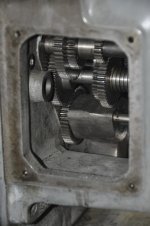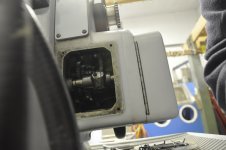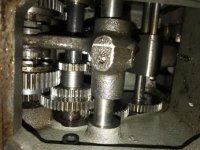Recently got a HLV-H and of course purposely for threading.
The feed lever for threading only seems to have 2 positions forward (towards headstock) or off. I can’t reverse with the half nut engaged.
Is there something that I am missing? Something out of adjustment? A broken switch?
Thank you so much for the help!
The feed lever for threading only seems to have 2 positions forward (towards headstock) or off. I can’t reverse with the half nut engaged.
Is there something that I am missing? Something out of adjustment? A broken switch?
Thank you so much for the help!










